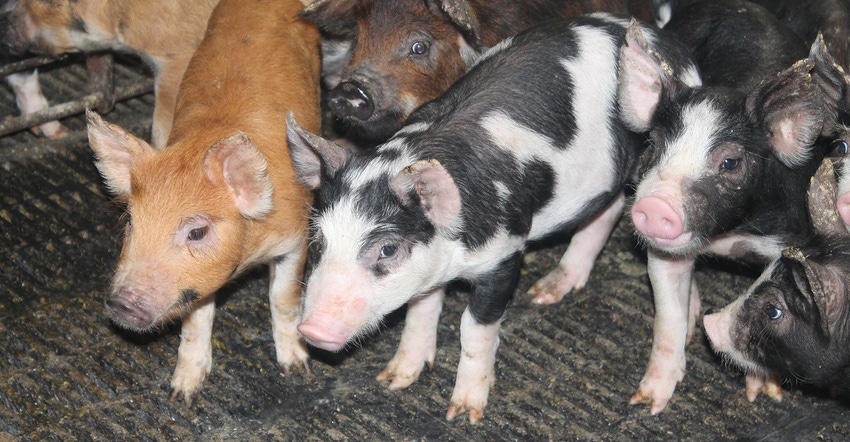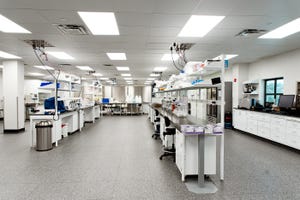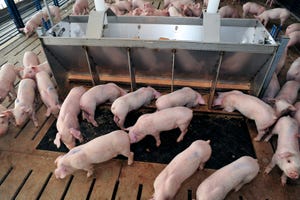Peptide compounds can accelerate fecal bacterial microbiome maturation
Lactobacillus species are known to prevent colonization of intestinal pathogens, thus providing benefits to the health of young animals.
March 19, 2020

A critical transition stage in the swine production cycle, weaning can induce rapid changes in the gastrointestinal tract architecture as well as the commensal bacterial populations. Changes in gut physiology and the microbiome may result from alterations in feed intake, diet composition and/or environment. Resulting intestinal dysfunction may increase the incidence of diarrhea, reducing the digestion of nutrients, and may increase pathogen infection directly within the unhealthy gut or indirectly due to the flow of undigested nutrients into the lower digestive tract.
Peptide compounds have potential as bioactive feed additives that may be beneficial to young animals. The activities of peptides may be direct, acting on the cells of the host, or indirect, acting on the microbiome of the host. Bioactivities of peptides include antimicrobial, antioxidant, immune modulation or as signaling molecules. In short, there are many potential impacts of bioactive peptides beyond supplying amino acids.
A peptide-based feed additive was evaluated at the South Dakota State University commercial wean-to-finish research facility. On the day of weaning, 45 pens of 24 mixed gender weaned pigs were assigned to one of three dietary treatments: 1) CON: standard nursery pig diet formulated to provide the amino acid recommendations according to the National Research Council (2012), 2) PEP: CON plus commercial peptide-based feed additive, or 3) PEP-10: PEP reformulated to provide 10% lower standard ileal digestible amino acid levels. Within a three-phase nursery feeding program, Phase 1 diets were fed from days zero to 7, Phase 2 diets from days 8 to 21, and Phase 3 diets from days 22 to 42. The commercial peptide-based feed additive was included in PEP and PEP-10 at 1.0%, 0.5% and 0.3% in Phases 1, 2 and 3, respectively. Fecal bacterial profiles at the end of Phase 2 and 3 were compared in CON- and PEP-fed pigs.
There were no significant differences in body weight, average daily gain, average daily feed intake nor gain:feed between animals fed control diets and animals fed the equivalent diets with the addition of the peptide-based feed additive. Pigs fed PEP-10 diets weighed less than pigs fed the control diets in the final two weeks of the study, with no other differences in the measured performance parameters.
However, alterations in fecal bacterial profiles were observed during the study. As expected, the composition of fecal bacteria was found to differ between pigs fed the CON Phase II diet and pigs fed the CON Phase III diet, most likely as a result of the change in ingredients between phases. Intriguingly, the fecal profiles from pigs fed the PEP Phase II diet showed a certain level of similarity to both the CON Phase II and the CON Phase III samples. The bacterial profiles from the PEP Phase III samples, however, were not found to be different from the CON Phase III fecal profiles. Taken together, these results suggest that fecal bacterial profiles from the PEP Phase II samples were intermediate between CON Phase II and CON Phase III fecal samples.
The changes in taxonomic and species profiles were indicative of microbial succession. Specifically, when pigs were fed the standard nursery diets, Lactobacilli were more abundant at the end of Phase II, while Streptococci were more abundant at the end of Phase III. Due to direct and indirect effects within the gastrointestinal tract, Lactobacillus species are known to prevent colonization of intestinal pathogens, thus providing benefits to the health of young animals.
Similarly, symbiotic Streptococci may be associated with protection against pathogen colonization in weaned pigs. In this context, the addition of the peptide-based feed additive into the diets of young animals appeared to induce an earlier maturation of the fecal bacterial profiles based on the similarity between Phase II bacterial profile of PEP-fed pigs and Phase III of CON-fed pigs. The health status and growth performance of animals has been correlated with the gut microbial composition, where it is known that populations that are more resistant to dysbiosis provide for better health and production.
Although there were no differences in the growth performance parameters measured in this trial, the results from this experiment suggest that the peptide-based feed additive included in standard nursery pig diets can potentially accelerate the maturation of the composition of the swine microbiome.
Sources: Ryan Samuel, Prakash Poudel, Crystal Levesque and Benoit St-Pierre, who are solely responsible for the information provided, and wholly own the information. Informa Business Media and all its subsidiaries are not responsible for any of the content contained in this information asset.
You May Also Like



